Video-conferencing app Zoom wasn’t really this popular before COVID-19. Since most of the companies have allowed their employees to work from home, Zoom has become one of the most commonly used WFH apps lately. Not just the official meetings but a lot more is happening over Zoom, which includes family video chats, playing games, and chit-chat with friends, webinars, etc.
But do you know about Zoombombing? Zoom, the videoconferencing app, has become a target for hackers and Zoombombing is one such attack where your personal meeting or a webinar is hacked and many uninvited people join in and bombard you with the offensive content and hate speech. Thousands of personal Zoom video calls exposed to strangers on the Internet! Moreover, over 500000 passwords have also been leaked on the internet! It is, therefore, imperative that you take some precautions if you wish to continue using this service.
Today, in this post, we will learn about some important Zoom settings for security. While all this may help you to some extent, you should know that this will not secure any of the content of your sessions from prying eyes since the issue is not with external attacks, but Man-in-the-middle attacks and Man-in-the-Browser attacks. So always also ensure that your OS, browser and security software is up-to-date.
Before we proceed with the security settings and features, here are a few points you always need to remember and follow in order to keep the unwanted people out of your Zoom meetings or events.
- DO NOT ever share your meeting link on any social media platform or public forums. Anyone having that link can just jump into your event and create chaos.
- Zoom has some settings wherein you can create a new ID for all your zoom meetings, avoid using your Personal Meeting ID and generate a random new ID for every meeting.
- You should know that Zoom conversations are not end-to-end encrypted.
Zoom has a paid and free version. The free Zoom Basic plan has a 40-minute time limit on meetings with 3 or more participants, whereas the licensed version lets you enjoy unlimited group meetings.
Best Zoom settings for security
You mustn’t share your personal meeting IDs and always create strong passwords. Here are some tips that will help you harden the security and privacy settings of the Zoom video conferencing app:
- Always set a new Meeting ID & password for each meeting
- Lock the meeting.
- Remove unwanted participants
- Disable 1:1 private chats
- Enable Waiting Room
- Disable the Join before host feature
- Disable Allow removed participants to re-join option
- Allow screen sharing by host only
- Disable recording of meetings
- End meetings as administrator once they are over.
Let us take a look at them in detail.
1] Always set a new Meeting ID & password for each meeting
When you sign up for the Zoom app and host a new meeting, you get a unique ID for your personal meeting and two different passwords. You can invite participants to your meeting with the invitation URL or just by giving them the meeting ID and password.
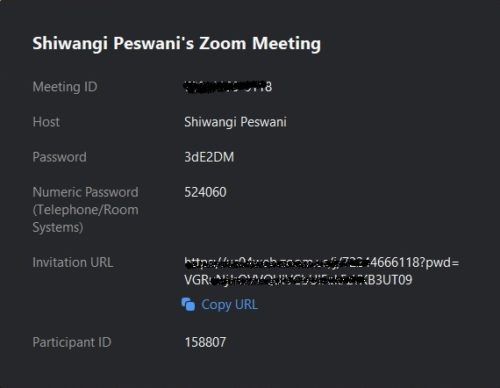
If you are worried about Zoombombing and having too many unwanted participants in your Zoom meeting, it is advised to generate a new ID for each meeting and not use the personal ID.
Go to Zoom.us and sign in. Click on Schedule Your Meetings. Scroll down and select the option os ‘Generate a new Meeting ID automatically’. This will give you a new ID for each of your Zoom Meetings. There is also a feature to change your Personal ID for the meeting but that is restricted to the paid versions only.
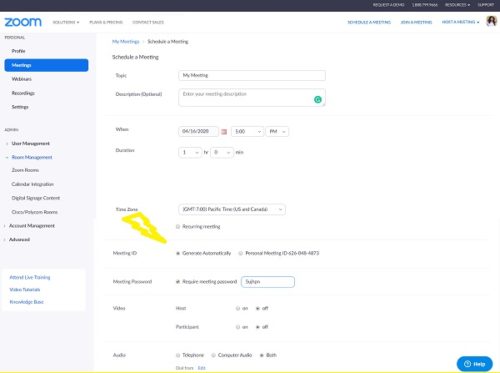
Read: Video conferencing etiquette you need to follow.
2] Lock the meeting
If you have shared the ID and password with someone and still don’t want them to join the meeting, the simple fix is to Lock The Meeting.

You can lock any of your personal Zoom meetings with a single click. Click on the Security tab and check ‘Lock the meeting’. Once your meeting is locked, no participants can join it. You can unlock the meeting anytime you want by clicking on ‘Unlock the meeting’.
Read: Zoom Tips and Tricks for better Video Conferencing.
3] Remove unwanted participants
If you have added someone in the meeting by mistake or you feel a participant can create any kind of chaos in the meeting, you can kick them out in just a couple of clicks. Click on ‘Manage Participants’ from your Zoom meeting screen to see a list of participants on the right panel. Remove the user you don’t want in your meeting. Users, once removed, cannot rejoin the meeting unless you change the settings in your Zoom account. You can also hold them temporarily if you want, just select the video thumbnail of the attendee you want to hold and select ‘Start attendee on hold’. By doing this, you can put their video and audio connections on hold and they won’t be able to disturb the meeting.
Read: Zoom Tips and Tricks for better Video Conferencing.
4] Disable Private 1:1 chats
The chat option is turned On by default, but if you do not want any participants to send private messages to the participants in the meeting, you better turn it off. To change this, go the web portal of Zoom and click on Settings–>Meeting–>In Meeting (Basic) and adjust the Chat settings. You can also prevent the participants from saving the chats here.
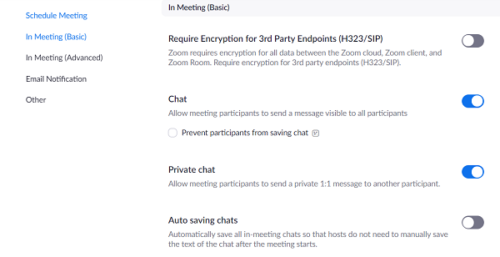
You can also change the settings directly from the main Zoon app window. Click on Chats and adjust the settings.

5] Enable Waiting Room
Sometimes, we have shared the meeting URL and the passwords with the invitees but we don’t want them to join the meeting now. This is where this Waiting Room comes in the scene. You can enable the Waiting Room with a single and a user can enter only when the meeting host allows him/her to be part of the meeting. To enable the waiting room, click on Security and select Enable Waiting Room. Please note that the Waiting Room feature is available only with version 4 or later. You can also create a custom Waiting Room page with a specific message for the waiting participants, but that feature is available only with version 4.1.20185.0205 or later.
6] Disable Join before host feature
‘Join before host’ feature allows attendees to join the meeting before the host joins, in fact, they can join and attend the meeting without the host, which some people might find risky. If you disable this feature, the attendees will see a pop-up dialog that says “The meeting is waiting for the host to join.” 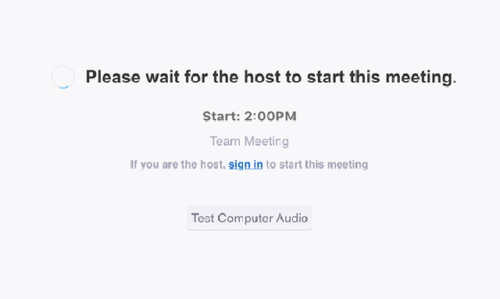
7] Disable Allow removed participants to re-join option

Sign in to the Zoom web portal as an administrator with the privilege to edit account settings.
Click Account Management > Account Settings > Meeting tab > In-Meeting (Basic) > Switch on the Allow removed participants toggle. If you want to make this setting mandatory for all users in your account, click the Lock icon.
8] Allow screen sharing by host only
The host controls the screen sharing of a meeting. You can make the changes right from the ‘Share Screen’ tab. You can allow one participant or multiple participants to share the screen. You can select from the Advanced Sharing Options tab if you want to keep the sharing controls limited to the host.
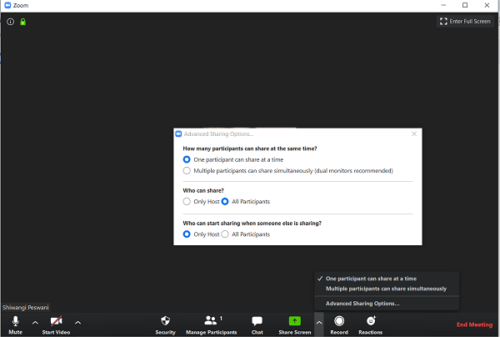
9] Disable recording of meetings
To disable the automatic recording of your meetings, you first have to sign in to your Zoom account on the web portal.
Go to Settings–>Recordings–>and Turn Off the ‘Local Recording’ which is On by default.
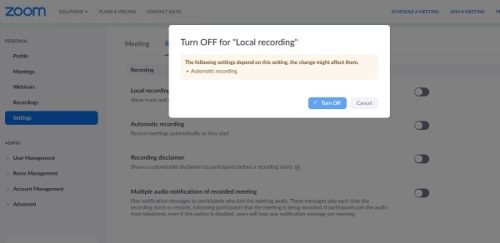
From here, you can change whether the hosts and participants can record the meeting to a local file or not, or you can change it to Automatic Recording as per your preferences. Furthermore, you can adjust your settings to get a notification whenever the recording starts. Enabling this setting sends a notification to all the attendees that the meeting is being recorded.
Read: Free Virtual Background images for Teams & Zoom.
10] End meetings as administrator once they are over
You can end your meeting directly from the Zoom app and don’t need to access the web portal for that. Just click on the ‘End Meeting’ button on the bottom right corner of your screen and select If you want to leave the meeting or end it for everyone as an administrator.
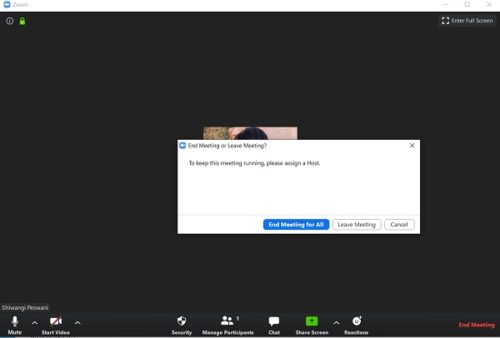
We have addressed almost every possible Zoom Settings For Security and Privacy. Please let us know if you come across any other security vulnerabilities.
Read next: Zoom Alternative video calling and web conferencing tools.